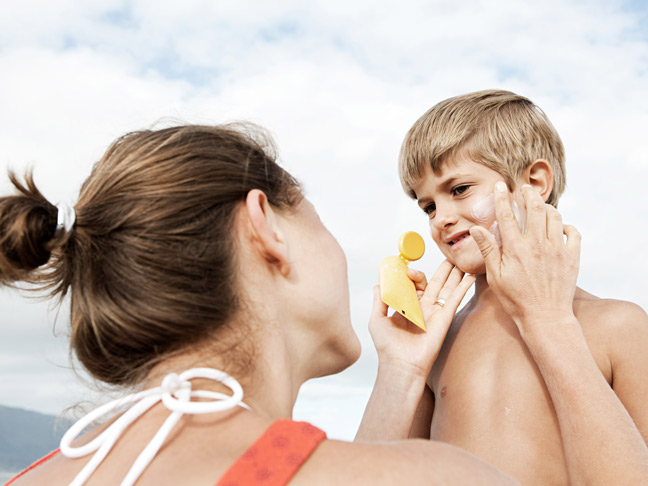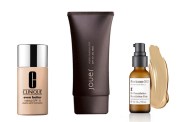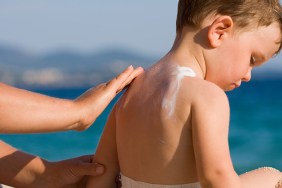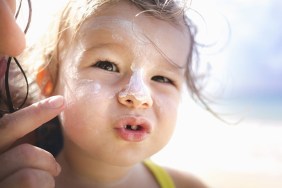You hear it all the time: Wear sunscreen. It’s one of beauty’s most hallowed codes, the one piece of advice that is inarguable. We know why we need it, of course. It’s the ultimate preventative measure against skin cancer and sunburns, shielding skin from harmful ultraviolet rays.
If you’ve ever found yourself faced with a wall full of sunscreen options, though, you know that it’s no easy task choosing the right one. Finding the best option for you and your kids comes down to several key factors.
All about sunblock
There are two different types of sun protection: chemical and physical. Physical protection, or sunblock, is denoted as such because it creates a physical barrier on the skin to block it from UVA and UVB rays. Sunblock is formulated with mineral ingredients, like titanium dioxide and zinc oxide. These can leave a chalky, white or even more noticeable cast on the skin. Sunblock is not easily removed, thus making it an excellent choice if you and your kids plan to spend plenty of time outdoors.
All about sunscreen
Decidedly the more common of the two, sunscreen offers chemical protection from the sun. Unlike sunblock, it is colorless and is formulated to screen the skin from harmful UV rays. Sunscreen is formulated with specific chemicals – benzophenones to protect against UVA rays and cinnamates and salicylates to combat UVB rays. Sunscreen’s ingredients do lose their efficacy over time, so it’s important to reapply every hour or so.
Look for a broad-spectrum formula. No two ways about it: This is crucial. Broad-spectrum sun protection protects skin from both UVA and UVB rays. UVB rays are targeted by the all-important sun protection factor (SPF), while UVA rays are responsible for skin damage and the formation of wrinkles. Thus, choosing a sunscreen that combats both is critical in maintaining the long-term health of the skin.
Know your SPF. The product’s SPF refers to the amount of time you can spend in the sun without suffering a burn. For example, a sunscreen with SPF 15 protects your skin for 15 times longer than if you were to step outside without any protection at all. Unfortunately, no sunscreen can block out 100 percent of those harmful rays, so choosing the highest SPF on the shelf won’t make much of a difference or increase the amount of permissible time spent outdoors. Therefore, reapplication is essential.
Once you’ve chosen an appropriate form of sun protection, keep these important details in mind:
Start early. Since children spend a great deal of time outdoors, application (and reapplication) is especially important. Look for a broad-spectrum formula with an SPF of 15 or greater, and opt for a hypoallergenic formula that may reduce the chance of an allergic reaction. Many brands formulate fragrance-free, PABA-free and water-resistant formulas that are perfect for the little one’s delicate skin.
But avoid overuse on baby. According to The American Academy of Pediatrics, babies under six months of age should not be exposed to sunlight. If it’s necessary, though, cover baby’s skin with long sleeves and legs and a hat. A minimal amount of low-SPF sunscreen may be applied to the face, but avoid putting sunscreen on other areas that baby may lick or ingest.
Wear it regularly. UV rays are completely invisible, and they aren’t present only when the sun is blazing. Harmful radiation is strongly penetrable, and can appear at any time of the year, even on a cloudy day. To be safe, apply sunscreen daily.
It’s not the only fix. Sun protection is by far the most important tool in the battle against UV rays, but it does not block it completely. So it’s essential to safeguard skin with other forms of protection, too, including wide-brimmed hats, sunglasses and even SPF-infused clothing.
Know when to toss. Pay close attention to the expiration date on the bottle. Just as the ingredients in sunscreen lose their efficacy once exposed to sunlight, so too do they diminish over time. And be wary of stashing a bottle in the trunk of the car or at the back of the medicine cabinet. A cool, dry space is best for keeping sunscreen fresh.








